Auctions
Less Fontana and More Competition Meant Sluggish Italian Auctions in London
After two years of astonishing growth, sales slumped by almost 50 percent to $52 million.
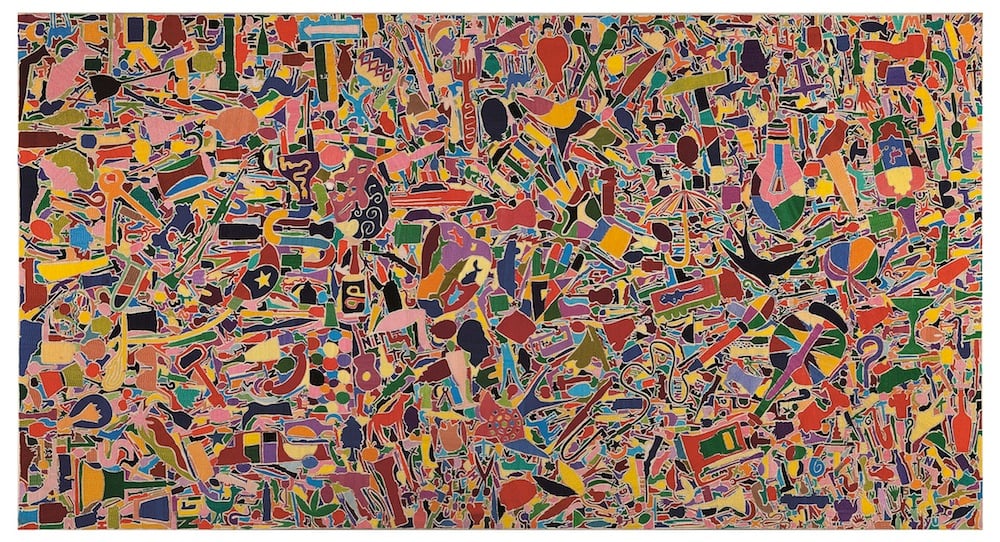
After two years of astonishing growth, sales slumped by almost 50 percent to $52 million.

Colin Gleadell

While the overall performance of Frieze Week’s contemporary art sales was unexpectedly strong, the modern and contemporary Italian sales slumped after two years of astonishing growth by almost 50 percent to £42 million ($52 million).
Apart from the inevitable adjustment to a rising market, there was also a massive expansion in the London gallery scene, which allowed buyers more choice away from the auctions. Approximately 20 galleries mounted modern Italian art exhibitions in London during Frieze week, from Alighiero Boetti at Tornabuoni, Emilio Scanavinio at Robilant & Voena, Fontana and Melotti at Mazzoleni, Penone at Marian Goodman, Marisa Merz at Thomas Dane, Italian Kinetic art at M & L, and Arte Povera at Cardi and Repetto. Competition is tough, and White Cube mounted a large exhibition of secondary market works by Jannis Kounellis, even though Sprovieri actually represents the artist in the UK.
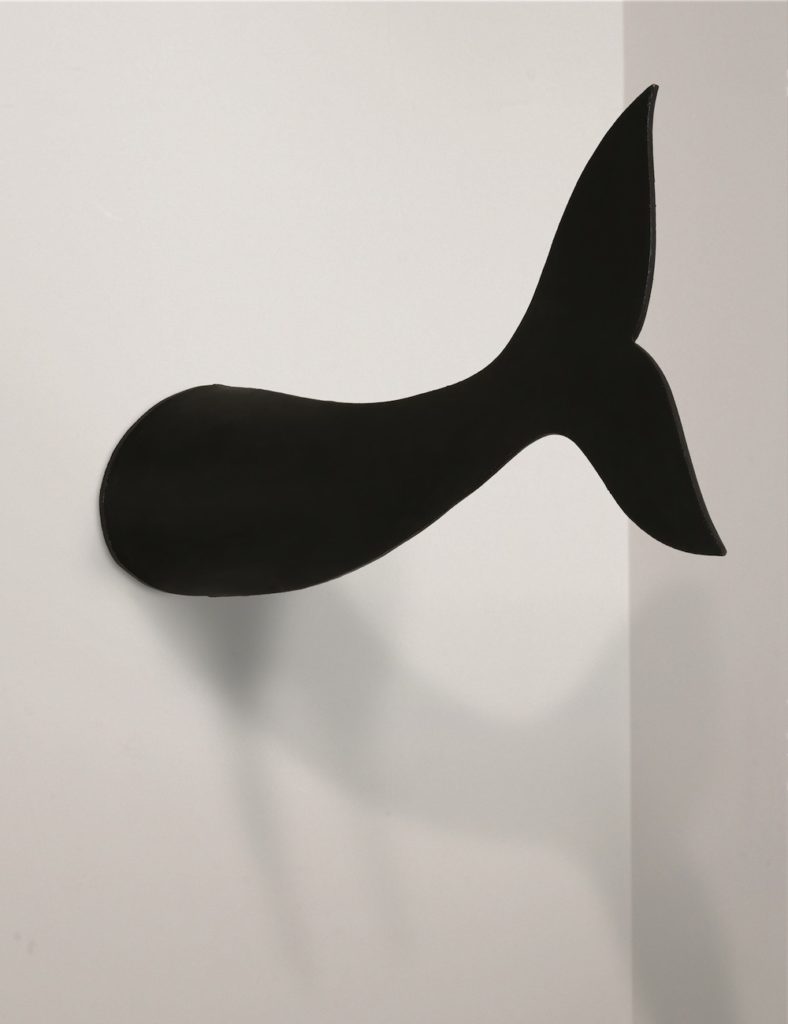
Pino Pascali Coda di delfino (Tail of a Dolphin) (1996). Image courtesy of Christie’s.
More displays were within the modern art fairs, Frieze Masters (Gastone Novelli at Massimo de Carlo) and the Pavilion of Art & Design (PAD).
At Christie’s there was positive bidding on the telephone for the rare 1966 sculpture of a dolphin’s tail by Pino Pascali, which made a record £2.6 million, and in the room from dealers Stefan Simchowitz, who paid a double estimate £1.4 million for a slashed blue canvas by Lucio Fontana, and Marco Voena (of Robilant+Voena), who also doubled estimates to buy a rare pink canvas by Enrico Castellani for £1.4 million as well as a red and black Fontana glitter painting within estimate for £725,000 ($920,750).
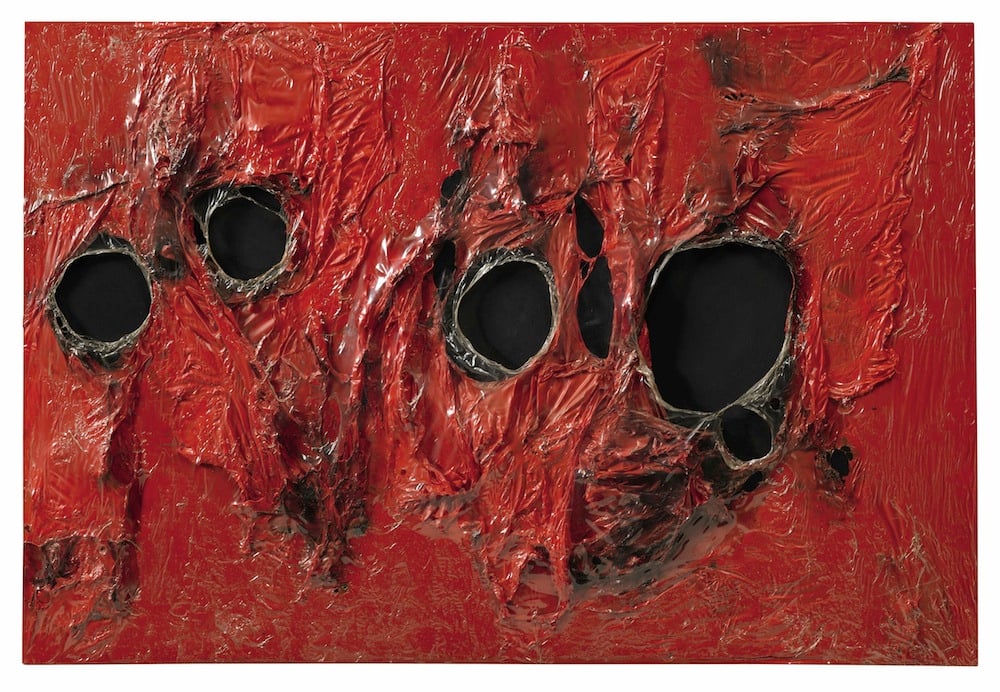
Alberto Burri, Rosso Plastica 5, (1962). Image courtesy of Christie’s.
But Christie’s saw an unusually high 24 percent of lots go unsold, including two of their top lots by Alberto Burri and Boetti. Their strongest suit was in artists who were not so well known outside Italy. Simchowitz paid a record £106,250 million for a visually arresting OP-Art painting from the ’60s by Franco Grignani, and the Dominique Lévy gallery bought Gilberto Zorio’s classic Arte Povera sculpture, made from pipes and plaster in 1967, for a record £281,000.
Lévy’s gallery, which works exclusively with the Carol Rama archive in London and New York since the artist’s death last year, also under-bid Rama’s hanging bicycle tires, Birnam’s premonition (1994), which sold for a record £179,000 ($227,330) against an £18,000 low estimate. More records fell for the Pop artist Giosetta Fiorini (£56,250/$71,438); Gianfranco Baruchello £68,750/$87,313; and Ettore Spalletti (£125,000/$158,750), but they were not enough to alleviate the sense that this was a less joyous occasion than recent Italian art sales, coming in below the low estimate for a premium inclusive £18.7 million.
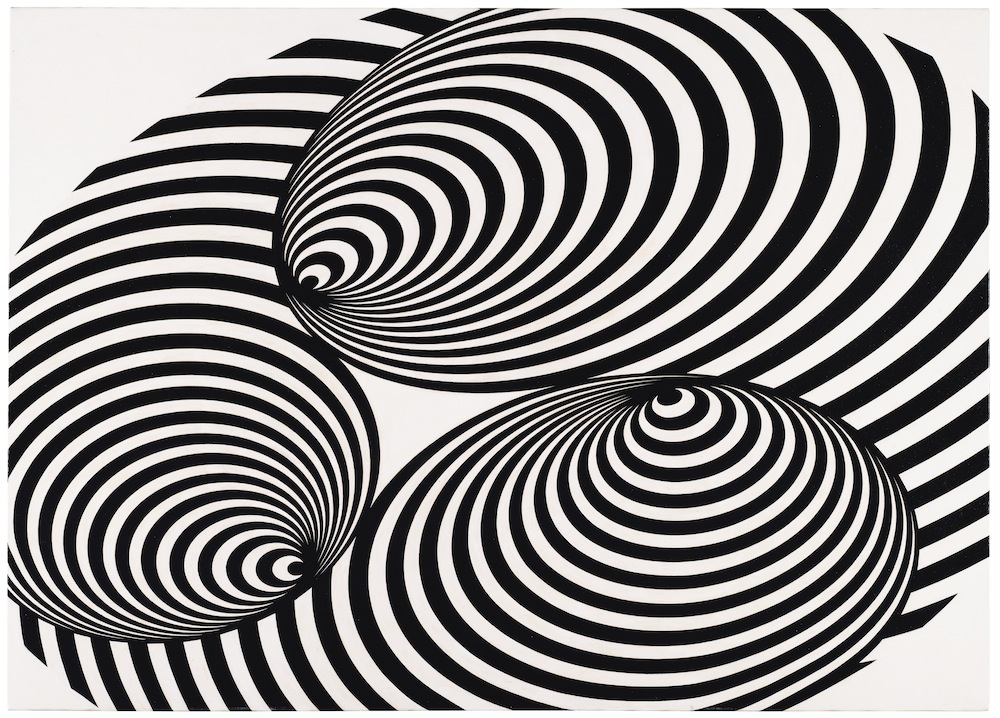
Franco Grignani, Proiezione accumulata (Accumulated Projection) (1965). Image courtesy of Christie’s.
Sotheby’s appeared to have watched Christie’s and lowered reserves by the next evening for its Italian art sale as at least half of the lots that sold did so on or below their lower presale estimates. As a result, they sold more lots (85 percent) and ended up the right side of the lower estimate (£19.7 million) with a £23.3 million ($28.9 million) sale.
But the pace was sluggish. It took just two bids for them to sell the top lot, Alberto Burri’s burned red plastic composition of 1962 to collector Dimitris Mavromatis, bidding in the room, for £4.7 million. Mavromatis looked mightily relieved that the only opposition seemed to come from a third party guarantee or irrevocable bid, as Sotheby’s puts it, as he chatted excitedly afterwards to various potential guarantors seated by him in the front two rows.
Most competition came for a pleated arrangement of crimson bandages, Forager for Plankton, by another Arte Povera precursor, Salvatore Scarpitta, that sold for a record £2.2 million to British art advisor, Christopher Eykyn, bidding for an American collector.
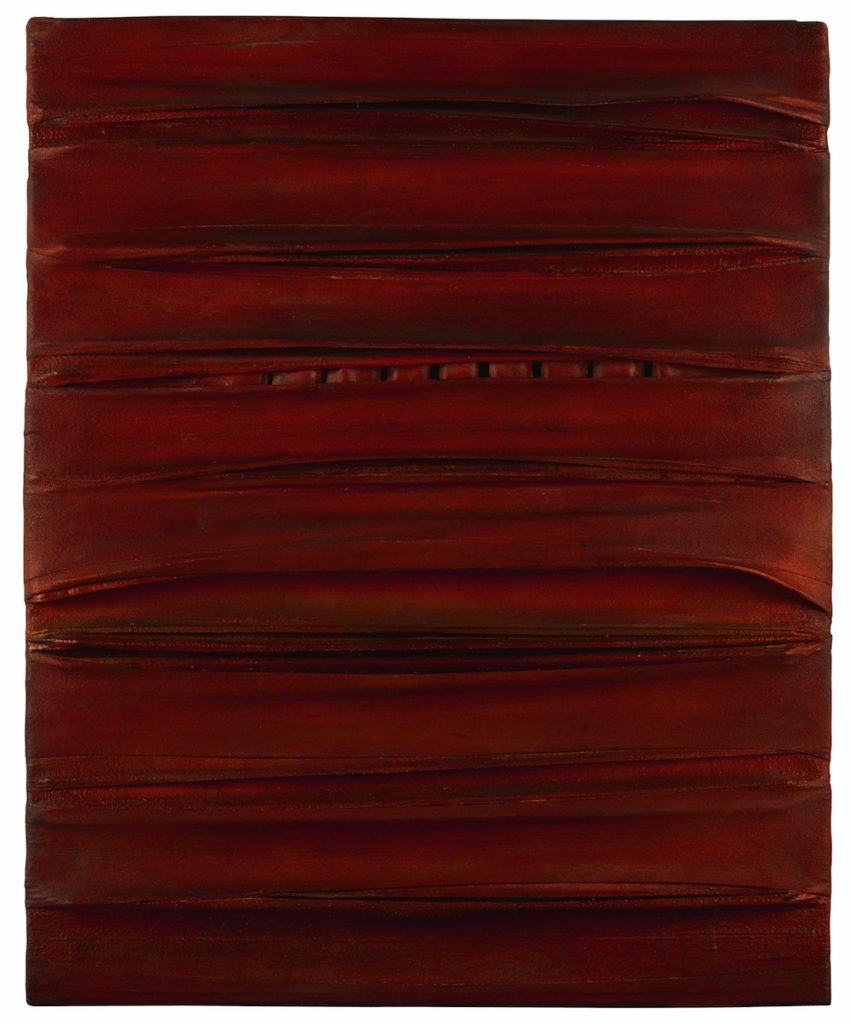
Salvatore Scarpitta Forager for Plankton (1959). Image courtesy of Christie’s.
Among the artists on the rise were Franco Angeli whose very contemporary looking abstract Tunisia, from 1961, sold for a double estimate record £100,000 to London-based contemporary art collector Eskandar Maleki, and the late Fabio Mauri, whose white shaped canvas sold for a record £125,000. In 2011, they could not get £30,000 for it, but since then, Mauri’s estate has been handled by the influential Hauser & Wirth gallery and his fortunes have changed.
Surprise bids came from Asia for a Burri, Sacco e Nero (1956), selling within estimate for £1.1 million ($1.4 million), and from a UK private buyer (not all UK buyers were canceled out by the exchange rate) who bought a Boetti Mappa below estimate, for £1.3 million ($1.6 million). The most consistent bidder was Italian dealer Giulio Tega, whose top purchase was an early Fontana ceramic of a Medusa’s head, for an above estimate £509,000 ($632,432). This capped a strong week for ceramics by an artist who last year dominated the Italian sales with 21 lots selling for £36.6 million.
It was the weaker supply of Fontana that made the biggest difference this year, with only 13 lots selling for £6.5 million.